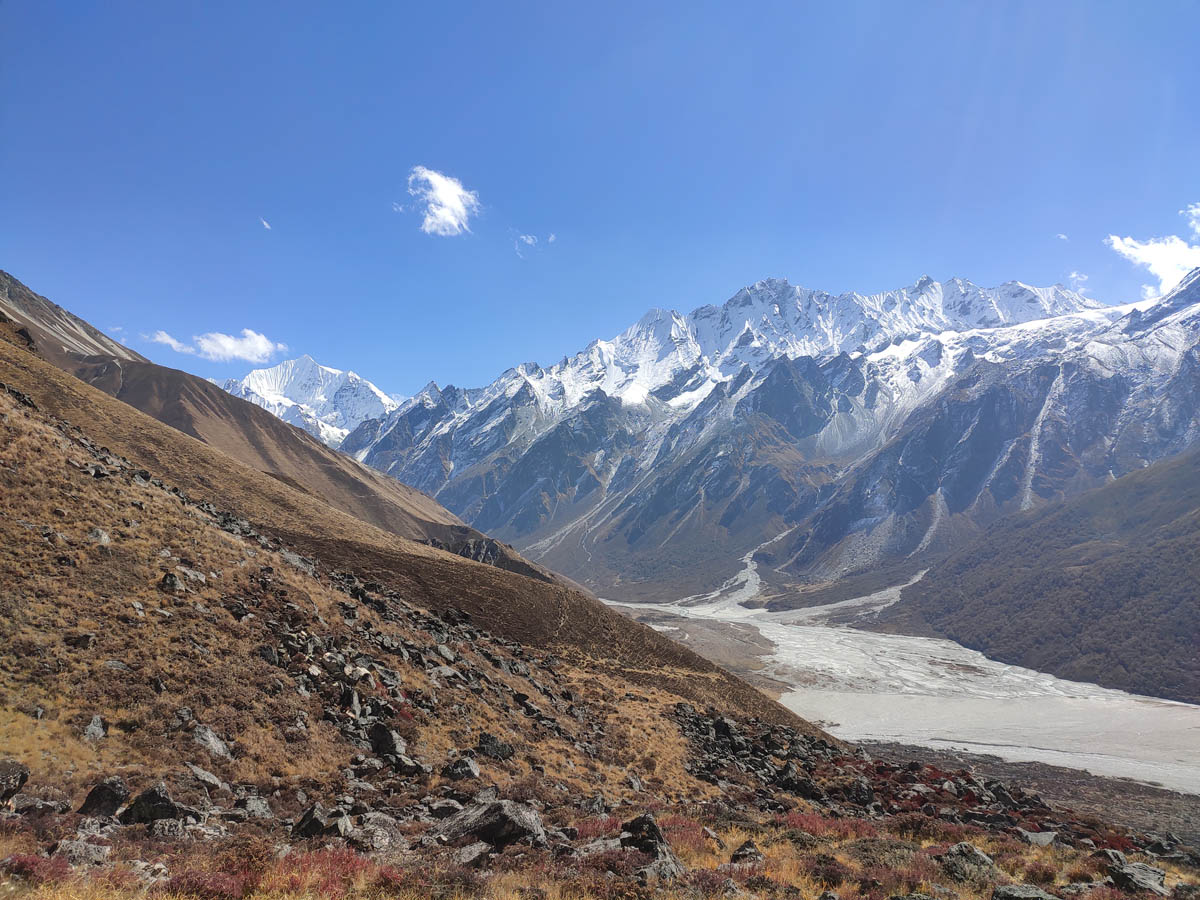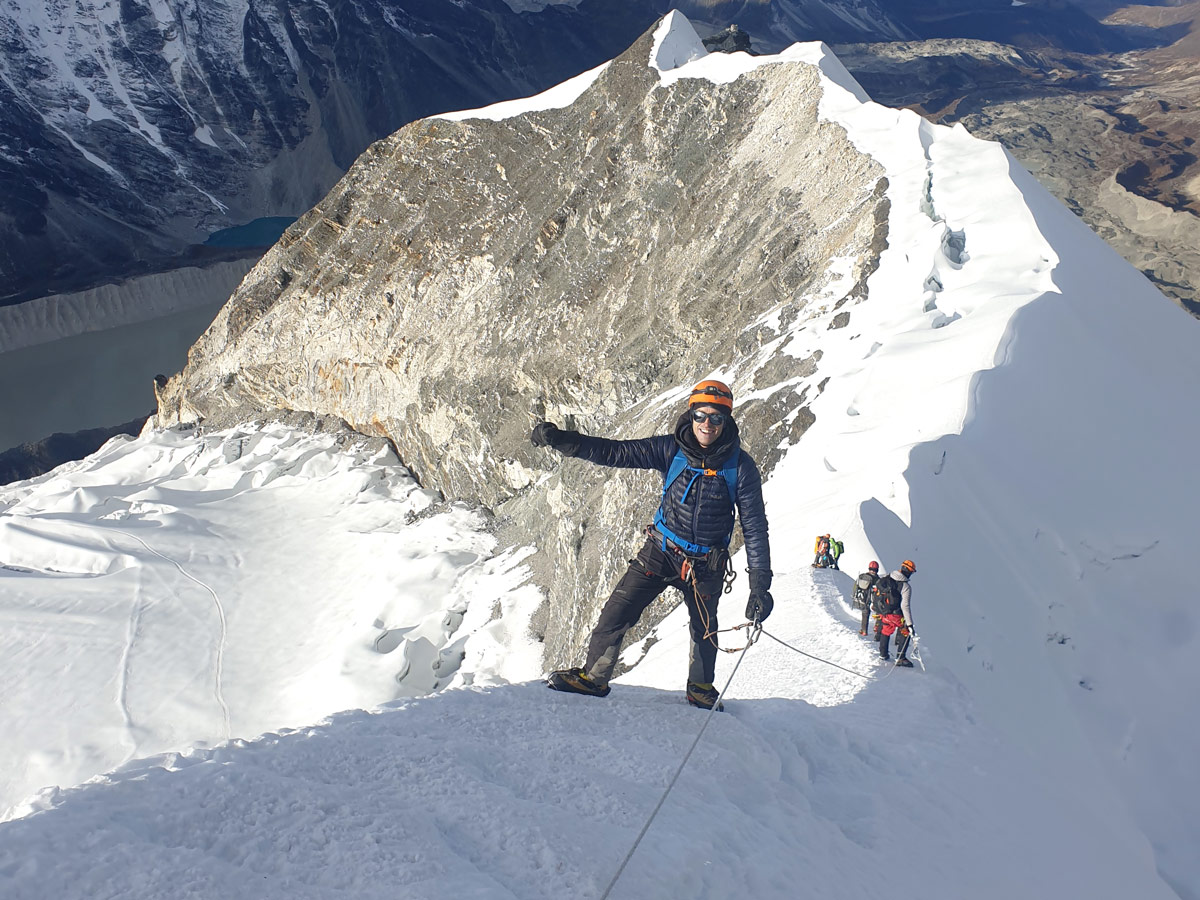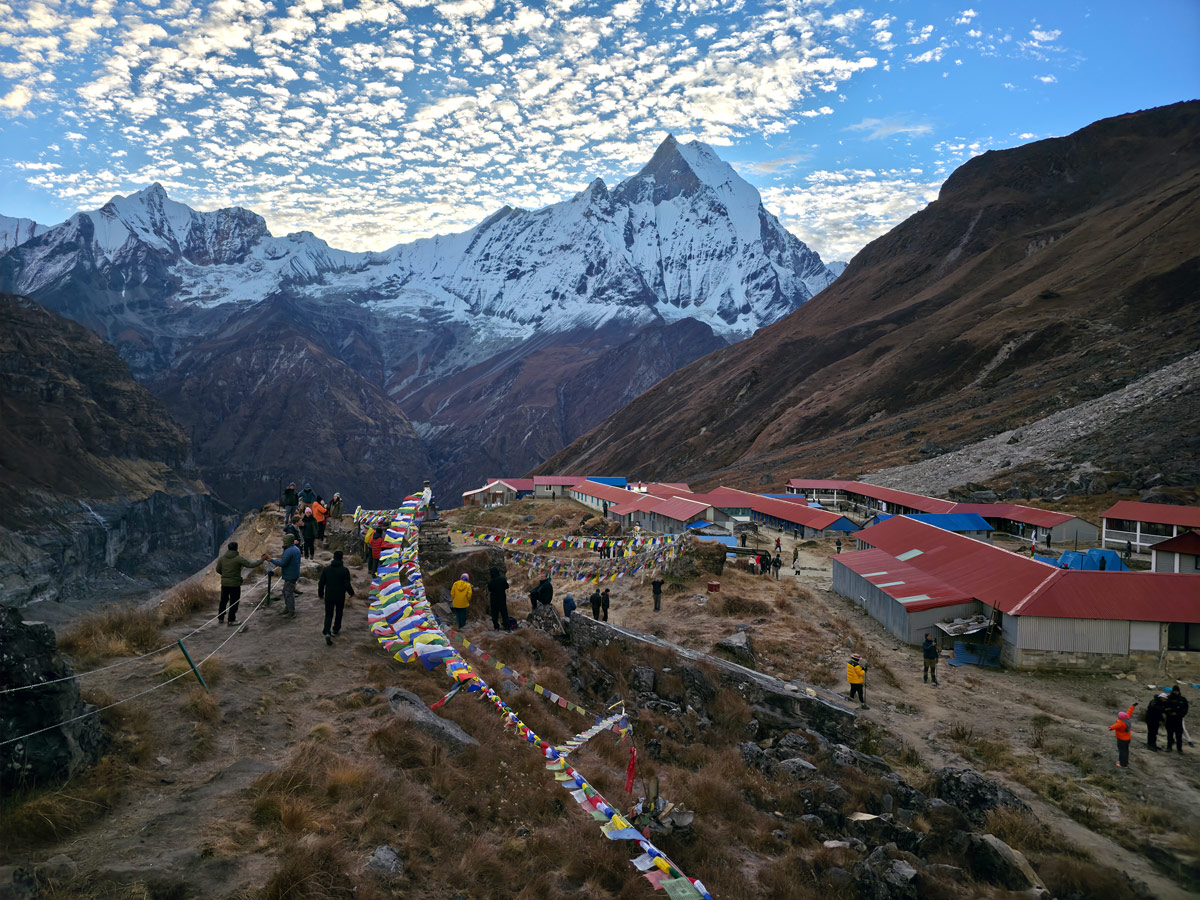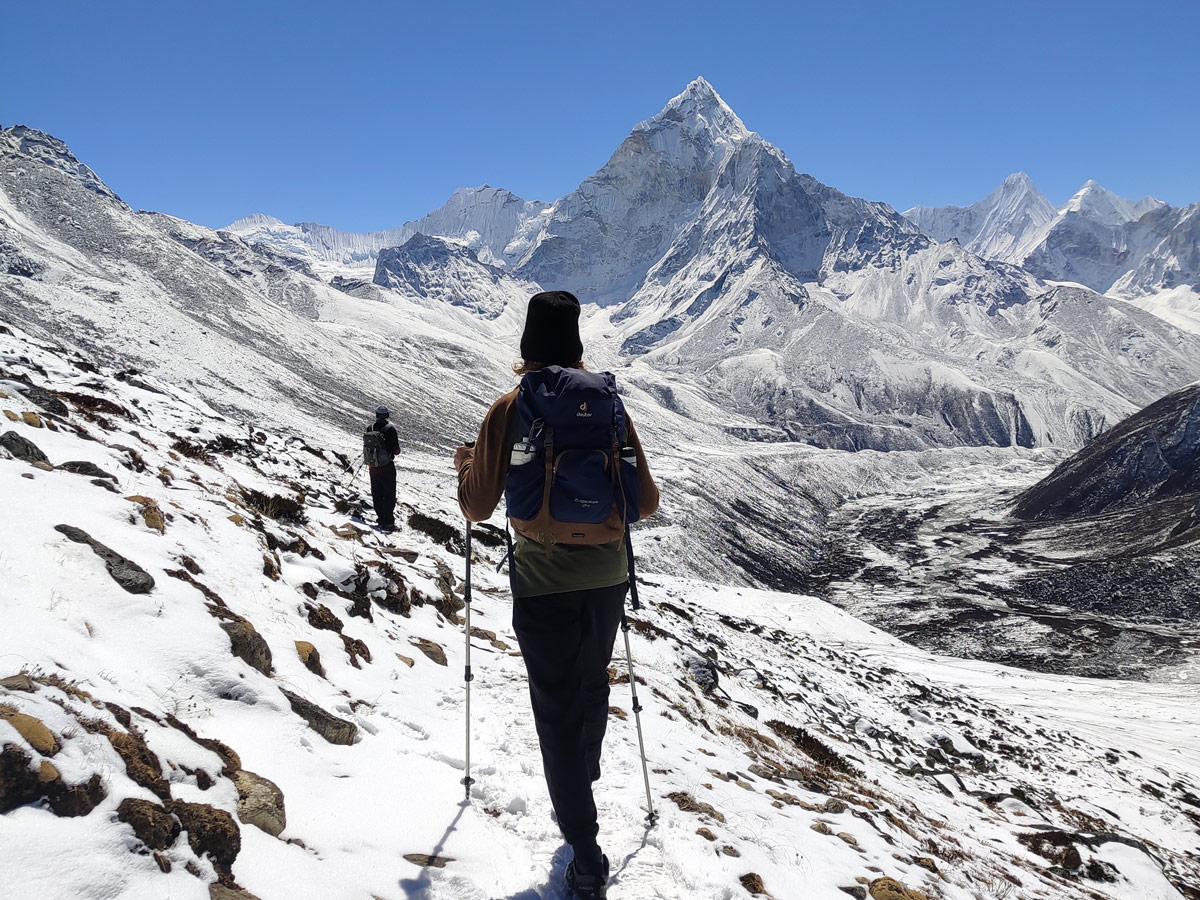Arguably the best location worldwide for trekking, Nepal has different trekking routes that are suitable for different kinds of trekkers. One such great trekking route is the trek to Kyanjin Ri which is the best vantage point in Langtang region.
Exploring Kyanjin Ri is an excellent choice for trekkers who are looking forward to stunning mountain views, rich cultural experiences, and a moderate challenge.
This trek will give you a profound Himalayan experience as it offers breathtaking views without demanding the extreme physical exertion of higher-altitude expeditions.
In this blog, we have prepared a comprehensive guide for beginners looking to explore Kyanjin Ri. From the trekking itinerary and best seasons to essential packing lists and cultural highlights, we cover everything you need to know to embark on this adventure with confidence.
Understanding Kyanjin Ri and Langtang Valley
First and foremost, lets understand the exact location of Kyanjin Ri. This vantage point is located within the Langtang National Park and sits at a respectable altitude of 4,773 meters (15,655 feet).
At this height, it provides a fantastic vantage point while remaining accessible to most trekkers. This location is comparatively accessible as well because it lies around 80km north from the Kathmandu Valley.
The Langtang Valley itself is a tapestry of natural wonders. There are several glaciers that carve their way through the landscape, feeding crystalline rivers that wind through lush forests and rocky terrains.
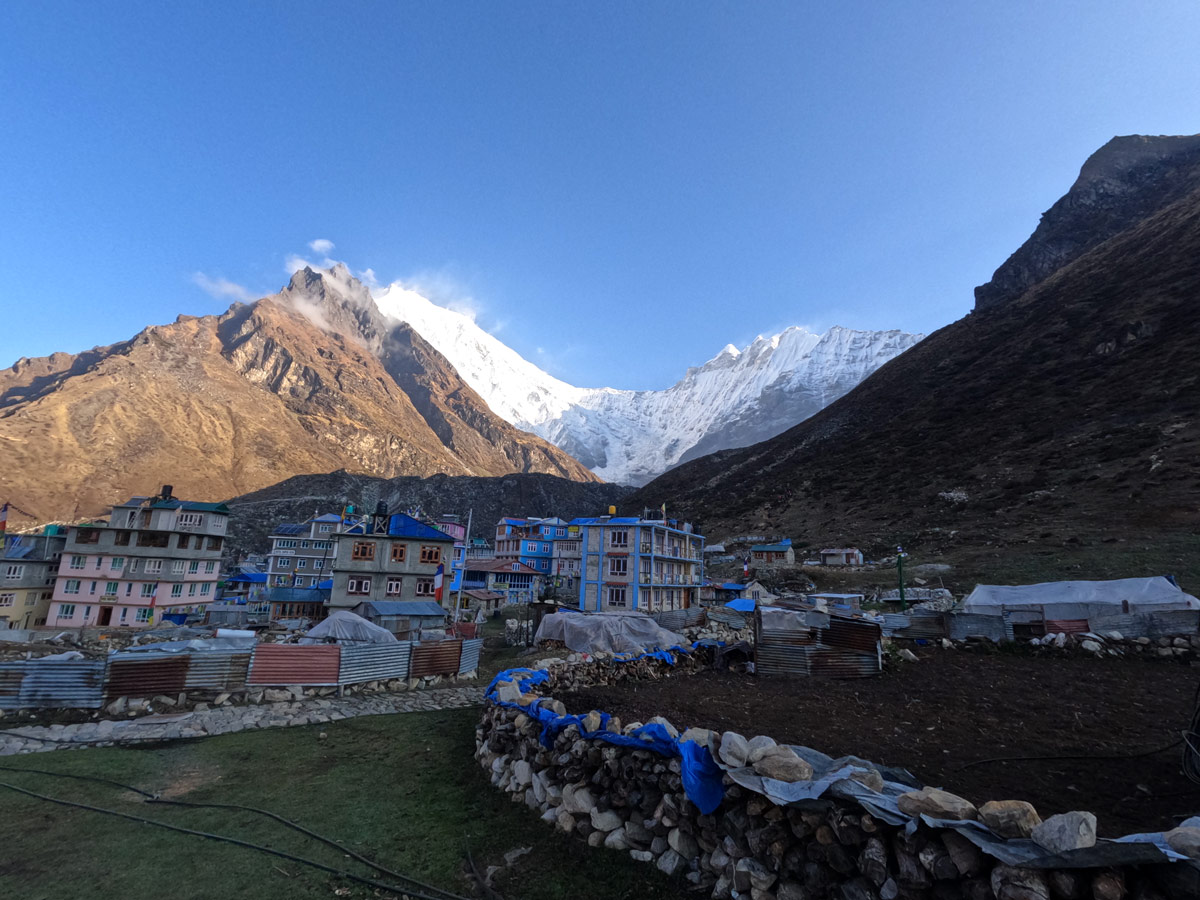
Towering peaks like Langtang Lirung dominate the skyline, painting a picture of raw, untamed beauty. And from Kyanjin Ri, you can get a 360-degree panoramic view of peaks like Langtang Lirung (7,227m), Yala Peak (5,500m), and Dorje Lakpa (6,966m).
On the way to Kyanjin Ri, you will find that the valley is also home to the Tamang people, an ethnic group with a rich cultural heritage. Their unique traditions and warm hospitality add a special dimension to the trek.
A major highlight around Kyanjin Ri is the Kyanjin Gompa which is a centuries-old monastery that stands as a testament to the spiritual devotion of the locals, offering a peaceful retreat for trekkers. It is also an important location for acclimatization.
How to Reach Kyanjin Ri?
Reaching Kyanjin Ri is usually a part of the Langtang Valley Trek itself. The journey starts from a 7 to 8 hours long drive by bus or jeep from Kathmandu to Syabrubesi, which marks the beginning point of the Langtang Valley Trek.
From Syabrubesi, the trekking route passes through spots like Lama Hotel, Langtang Village, after which you will cross lush forests, Tamang villages, and alpine meadows reach Kyanjin Gompa, which is one of the spiritual points in the Himalayas of Nepal.
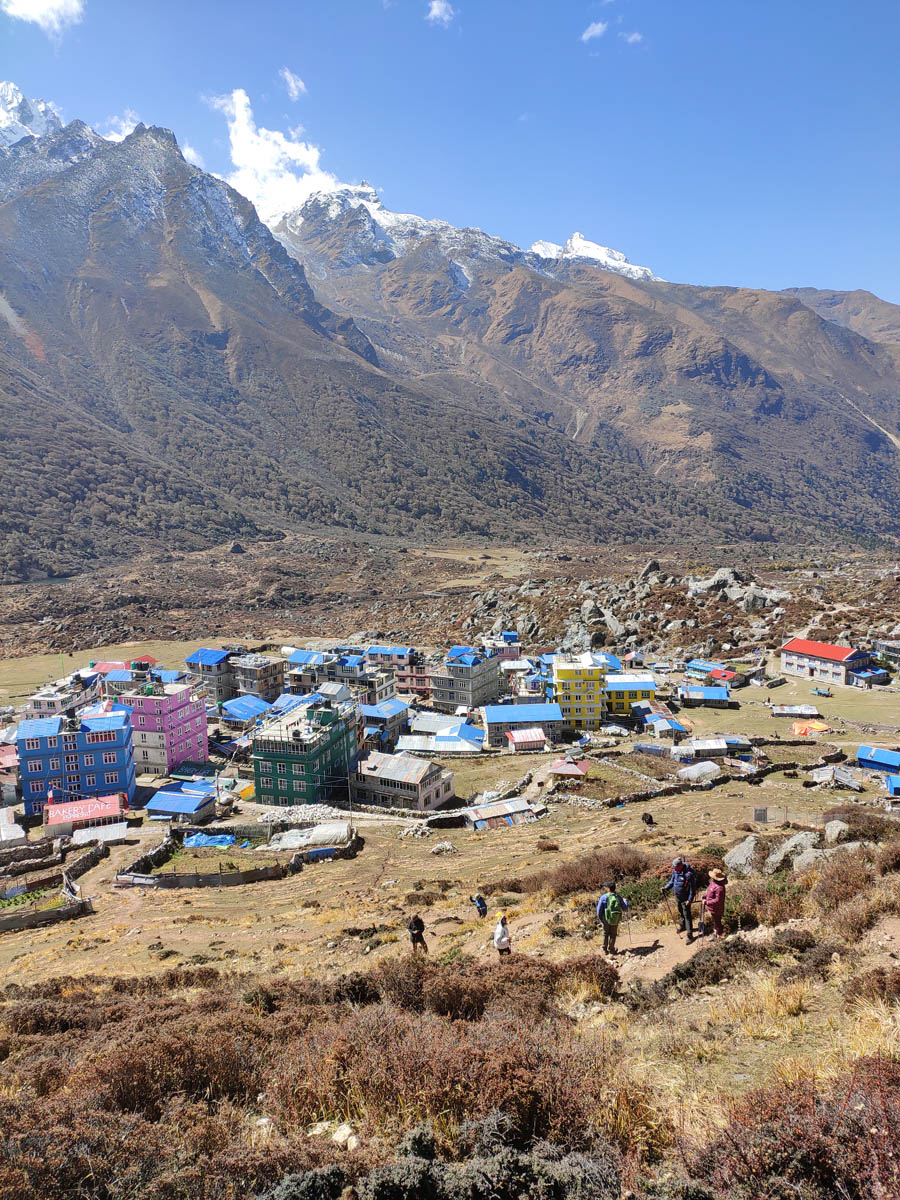
Once you have reached Kyanjin Gompa, you can simply hike to Kyanjin Ri which is a challenging and steep round trip hike of 4 to 6 hours. However, the journey is equally rewarding as you will get fantastic panorama of the Himalayas.
Best Time to Visit Kyanjin Ri
Being a vantage point in the Himalayas of Nepal, one of the reasons why you would visit Kyanjin Ri is to experience the stunning views that one can get from here. Therefore, you should pick a suitable season for it.
The best time to visit Kyanjin Ri is during the months of Spring (March to May) when the weather is ideal and the rhododendron forests are in full bloom. You will be able to see clear mountain views amidst moderate temperatures.
The second best season is during the months of autumn from September to November where you will get best visibility with stable weather conditions. However, this is the peak trekking season in Nepal so you will come across a lot of crowd.
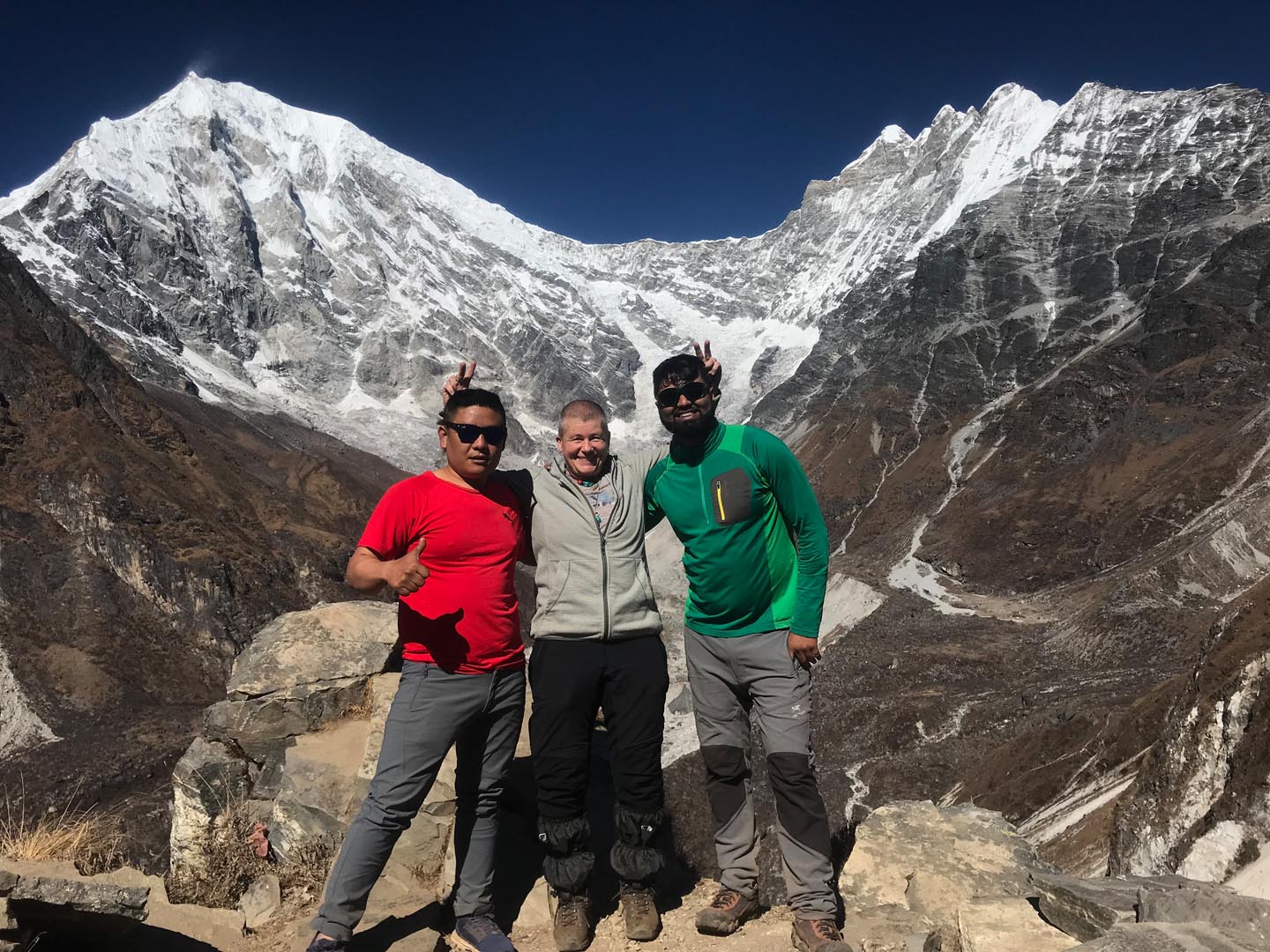
Winters (December to February) can be quite harsh in terms of temperature as you will feel very cold at an altitude as high as Kyanjin Ri. However, you will be able to view snow capped landscapes and snowfall which is a plus point.
Monsoon from June to August is a time that is best avoided while trekking in Nepal as this season features frequent rain, muddy trails, and poor visibility. This is not the best season due to leeches as well as landslides and blocked trails.
Preparing for Trek to Kyanjin Ri
Physical Fitness and Training
No matter which trek you are embarking on, physical fitness is paramount for a successful trek as it is a physical activity which your body has to be prepared to tackle.
While the trek to Kyanjin Ri is considered a moderate adventure, you’ll still be trekking for several hours each day in high altitude areas. Therefore, you should start preparing at least 3 months in advance to get basic physical fitness.
While working out, focus on cardiovascular exercises like running, swimming, and cycling to increase your stamina. Also, practice strength training to prepare your legs for the uphill climbs.
Engage your core muscles, shoulders, calves, and back. This is important as you will be climbing steep ascents with a considerable amount of weight on your back.
Packing Essentials
Packing the right gear for the trek is essential. You have to make sure that you don’t overpack while also ensuring that you don’t miss out on any essentials as you will be going to remote areas in Nepal where everything might not be readily available.
Opt for lightweight, layered, and preferably convertible clothing to adapt to changing temperatures while also being sustainable. Invest in a good pair of trekking boots, a warm sleeping bag, and a reliable backpack.
Carry a well stocked first-aid kit, including medications for altitude sickness and other basic illnesses as it might come in handy during any medical emergency. The key is to pack light but wisely, prioritizing essentials.
Acclimatization and Health
Altitude sickness can affect anyone, regardless of your fitness level or prior trekking experience. Therefore, it is important that you familiarize yourself with the symptoms, such as headaches, nausea, and shortness of breath.
If you experience any symptoms, descend to a lower altitude immediately. Do not take AMS lightly as these symptoms can turn dangerous quite fast, often leading to serious issues like High Altitude Pulmonary Edema and High Altitude Cerebral Edema.
Staying hydrated, eating well, and avoiding alcohol and caffeine are the key to preventing altitude sickness along with acclimatization. Ascend gradually and listen to your body.
What to Expect on a Kyanjin Ri Trek?
While you explore Kyanjin Ri, you will come across many unique attractions that are going to be a highlight of your trekking experience. Some of the major attractions of the Kyanjin Ri Trek are as given below:
Landscape & Scenery
The trek taking you to Kyanjin Ri unfolds through some of the most stunning landscapes that include lush forests, cascading rivers, and alpine meadows, which transition into rocky terrains and glaciers as you ascend higher.
The trail winds through dense forests, across suspension bridges, and alongside rushing rivers. The villages along the way offer glimpses into the traditional lifestyle of the Tamang people.
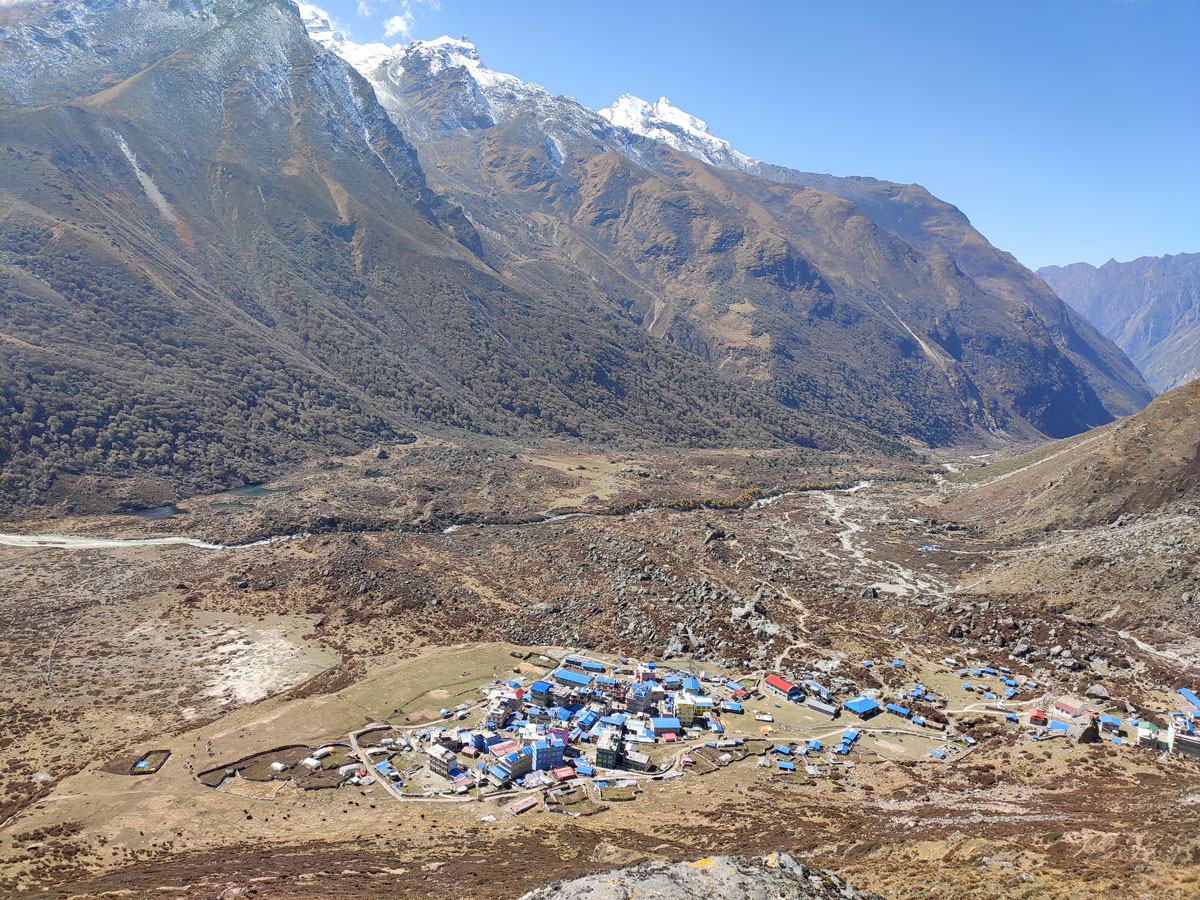
While the landscape is equally stunning, the panoramic view from Kyanjin Ri is exceptionally unparalleled. This vantage point offers a breathtaking sight of peaks like Langtang Lirung (7,227m), Dorje Lakpa (6,966m), and Yala Peak (5,500m).
Expect to see beautiful hanging glaciers, deep gorges and crevasses, and the stunning Langtang Valley, making this trek a paradise for nature lovers and photographers.
Cultural Experience
The cultural exposure on the way to Kyanjin Ri is something that you should be looking forward to. The Tamang and Tibetan influenced communities along the trail are warm and welcoming.
You will be fascinated by the traditional stone houses, Buddhist prayer flags, and chortens (stupas) that you will come across as they offer a glimpse into the Himalayan lifestyle.
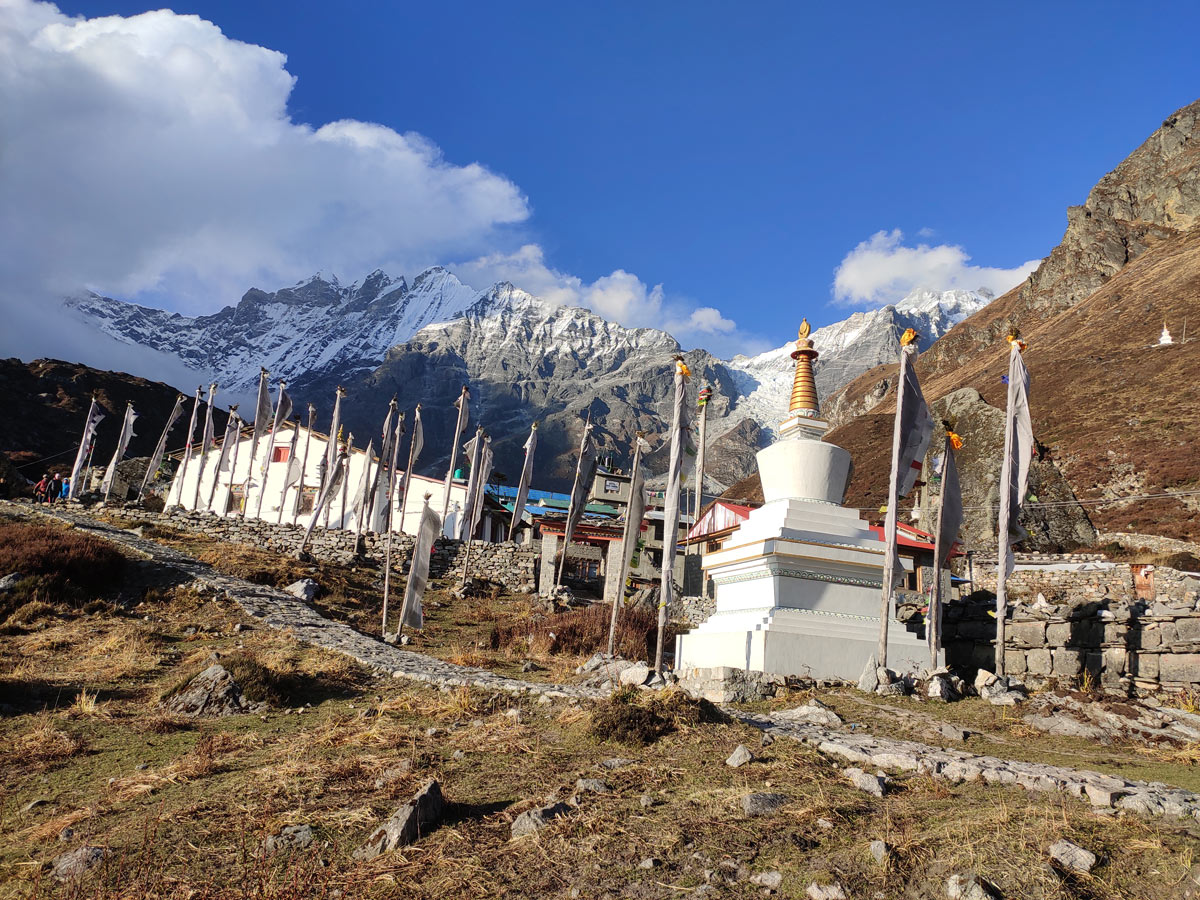
One of the highlights of the trek is visiting Kyanjin Gompa, an ancient Buddhist monastery where trekkers can witness monks chanting prayers and spinning prayer wheels.
The sound of fluttering prayer flags and tolling bells accompanied by the stunning panoramic views is what makes the experience at Kyanjin Ri truly magical. The region is known for its local yak cheese, produced at the Kyanjin Cheese Factory, established with Swiss collaboration. Trying fresh yak cheese is a must!
Wildlife & Flora
As the trek to Kyanjin Ri passes through one of the protected areas of Nepal, you will come across a wide variety of wildlife here. The interaction with the wildlife can differ based on the season when you are trekking.
The lower sections of the trek pass through Langtang National Park which is home to a variety of wildlife, including the elusive red panda, Himalayan black bear, Himalayan tahr, snow leopards, langurs, and various bird species.
Particularly in Spring, you will see a burst of colors along the trekking route as rhododendron forests bloom through different locations in the Himalayas. In autumn, you will see golden hues in the alpine meadows.
The higher elevations of the trek are characterized by unique flora including dwarf junipers and alpine shrubs, which have adapted to the harsh Himalayan climate.
With a combination of awe-inspiring landscapes, rich cultural heritage, and diverse flora and fauna, the Kyanjin Ri trek promises an unforgettable adventure for every trekker.
Permits and Regulations
As most of the treks in Nepal are located within national parks or conservation areas, you require certain permits to enter these premises. To trek to Kyanjin Ri, you need the following permits:
- Langtang National Park Entry Permit – This is the permit to enter Langtang National Park. It costs approximately USD 30 per person (NPR 3,000 for foreigners, NPR 1,500 for SAARC nationals, free for Nepali citizens). This permit helps fund conservation efforts in the Langtang region.
- TIMS Card (Trekkers’ Information Management System) – This is the compulsory permit which is required for every trekking route in Nepal. It costs USD 10 to 20, depending on whether you trek with an agency or independently. TIMS helps track the trekkers and ensures trekker safety by maintaining records.
These permits can be obtained in Kathmandu at the Nepal Tourism Board Office or at the park entry point in Dhunche. When trekking with a reliable local trekking agency like Ace the Himalaya, your permits will be taken care of by the agency itself.
Trekking Challenges and How to Overcome Them?
- Unlike the Everest region, Langtang has fewer teahouses and amenities. So, you should be prepared with all your essentials and also learn to adjust with limited amenties.
- The weather in the Himalayas can be unpredictable and sudden weather changes, including strong winds and snowfall, can make trekking difficult. Therefore, you should constantly check weather forecasting.
- The climb to Kyanjin Ri is steep and physically demanding, requiring good fitness levels which means you have to work out well in advance.
- The trek reaches 4,773m, where symptoms like headaches, dizziness, and nausea can occur. Proper acclimatization is necessary.
Alternative Routes and Extensions
For those wanting to explore beyond just Kyanjin Ri, there are several other places in the Langtang Valley and around it that you can explore. Some of them are as given below:
Tserko Ri (4,984m)
The journey to Kyanjin Ri is a rather comfortable one with less hurdles and challenges. But if you want a more challenging ascent with even grander views, hiking up to Tserko Ri is a great option.
The journey to Tserko Ri is not very challenging once you have reached Kyanjin Ri. It takes merely around 5 to 6 hours for a round trip from Kyanjin Gompa, requiring an early start.
Gosaikunda Trek
If you want a spiritual extension to your trekking journey, consider extending your trek by heading towards the sacred Gosaikunda Lake, famous for its Hindu pilgrimage significance and serene alpine beauty.
While at this lake, you will be able to bask in the spiritual peace that this location holds while also being able to enjoy the beautiful lake views and the reflection of stunning mountain peaks in this lake.
Tamang Heritage Trail
If you want to dive deep into the culture of Langtang Valley, you can further immerse yourself in the rich Tamang culture by taking a detour through traditional villages, hot springs, and picturesque landscapes via the Tamang Heritage Trail.
Helambu Trek
A small yet scenic extension of the Langtang Valley Trek is the Helambu Trek that connects Langtang with the Helambu region, offering a mix of Buddhist monasteries, lush forests, and stunning mountain backdrops.
